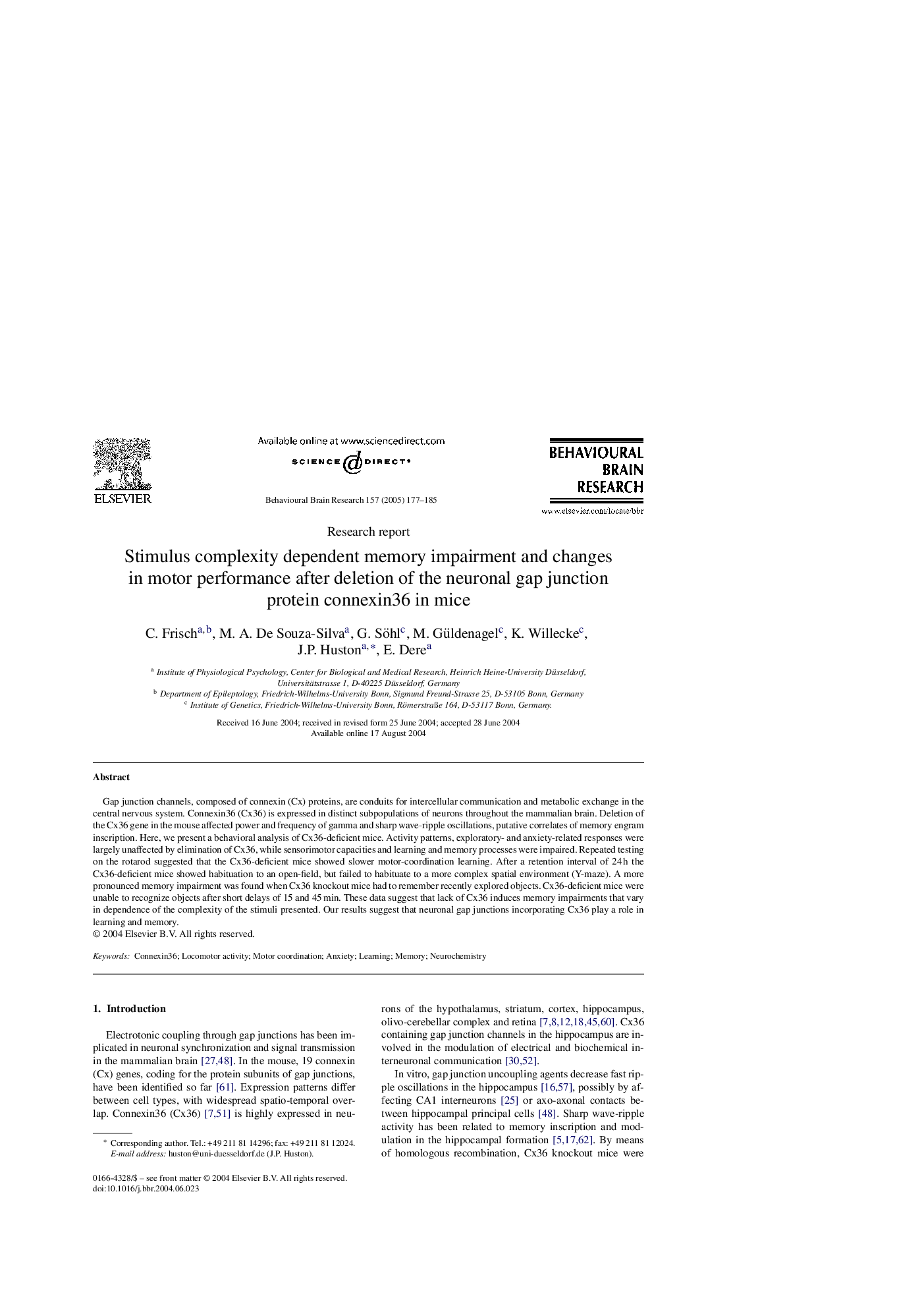| Article ID | Journal | Published Year | Pages | File Type |
|---|---|---|---|---|
| 9406915 | Behavioural Brain Research | 2005 | 9 Pages |
Abstract
Gap junction channels, composed of connexin (Cx) proteins, are conduits for intercellular communication and metabolic exchange in the central nervous system. Connexin36 (Cx36) is expressed in distinct subpopulations of neurons throughout the mammalian brain. Deletion of the Cx36 gene in the mouse affected power and frequency of gamma and sharp wave-ripple oscillations, putative correlates of memory engram inscription. Here, we present a behavioral analysis of Cx36-deficient mice. Activity patterns, exploratory- and anxiety-related responses were largely unaffected by elimination of Cx36, while sensorimotor capacities and learning and memory processes were impaired. Repeated testing on the rotarod suggested that the Cx36-deficient mice showed slower motor-coordination learning. After a retention interval of 24Â h the Cx36-deficient mice showed habituation to an open-field, but failed to habituate to a more complex spatial environment (Y-maze). A more pronounced memory impairment was found when Cx36 knockout mice had to remember recently explored objects. Cx36-deficient mice were unable to recognize objects after short delays of 15 and 45Â min. These data suggest that lack of Cx36 induces memory impairments that vary in dependence of the complexity of the stimuli presented. Our results suggest that neuronal gap junctions incorporating Cx36 play a role in learning and memory.
Related Topics
Life Sciences
Neuroscience
Behavioral Neuroscience
Authors
C. Frisch, M. A. De Souza-Silva, G. Söhl, M. Güldenagel, K. Willecke, J.P. Huston, E. Dere,
